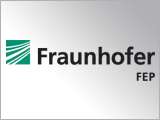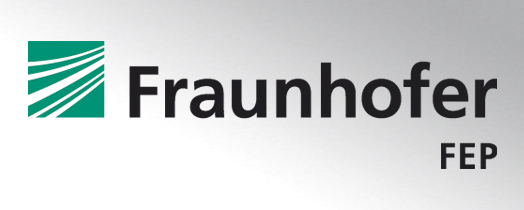02 | 2013 – Electron Beam Technology: An Idea bears fruit
Electron beam technology is flourishing. One of its pioneers, Prof. Dr. Siegfried Schiller, has reached his 80th birthday: The Fraunhofer FEP wishes to congratulate him.

Even though old tube-type televisions are nowadays found in very few homes, electron beam technology is still very much in fashion. In the mid 1920s electron beams were used for the first time for technical applications such as for drilling small holes and for evaporating metals. From 1930 onwards electron beams were then used all over the world in television sets. Today, electron beam technology has a very wide spectrum of applications.
The basis for these applications, which has in the meantime developed into a very successful area of work of the Fraunhofer Institute for Electron Beam and Plasma Technology FEP, has been decades of R&D work. This includes work at the former Manfred von Ardenne Research Institute and more recently at the Fraunhofer FEP. Prof. Dr. Siegfried Schiller supervised the technology developments from 1965 to 1990, firstly as deputy director of the Manfred von Ardenne Research Institute and then until 1999 as director of the Fraunhofer FEP. On the occasion of his 80th birthday it is appropriate to reflect on his fruitful work.
The spectrum of successful modern applications for electron beams starts with classical production processes such as the welding together of different materials, the remelting of metals, the high-rate coating of large surfaces such as turbine blades in the aircraft industry, and surface-structuring. Even in areas not normally associated with electron beams this technology complements traditional technologies: For example, plastics can be given new functionalities on a large scale and paints can be cured without the need for UV initiators.
It is more than 25 years since the former Manfred von Ardenne Research Institute first carried out studies on the sterilizing effect of accelerated electrons. This ability of electron beams to kill pathogens such as bacteria, fungi, and viruses is becoming ever more relevant today: After all, the damage to people’s health and to the economy due to multiresistant germs in hospitals and in agriculture is becoming ever more serious. Electrons are able to sterilize materials without high heat input, and this is particularly important for medical products made of plastic. Unlike the familiar gamma rays whose use requires special equipment, the Fraunhofer FEP uses low-energy electrons which require no complex concrete shielding.
The sterilization of seed products using electron beams, which is based on the same principle, has grown in popularity in recent years due to stricter environmental regulations on the use of chemical dressings and due to greater awareness about food safety. Since 2011 the amount of seed sterilized using electron beams has tripled compared to previous years to about 9000 metric tons. In 2012 the quantity of electron beam treated seed reached the 11,000 metric ton mark, which represents the limit of the demonstration unit. One customer of the Fraunhofer FEP has already ordered a second, customized unit.
The Fraunhofer FEP eagerly looks forward to the future and is enormously grateful to one of the pioneers of electron beam technology, Prof. Dr. Siegfried Schiller.
For further information about electron beam technology:
www.fep.fraunhofer.de/en/Technologien/Elektronenstrahltechnologie.html

Download the press release
 Fraunhofer Institute for Electron Beam
Fraunhofer Institute for Electron Beam